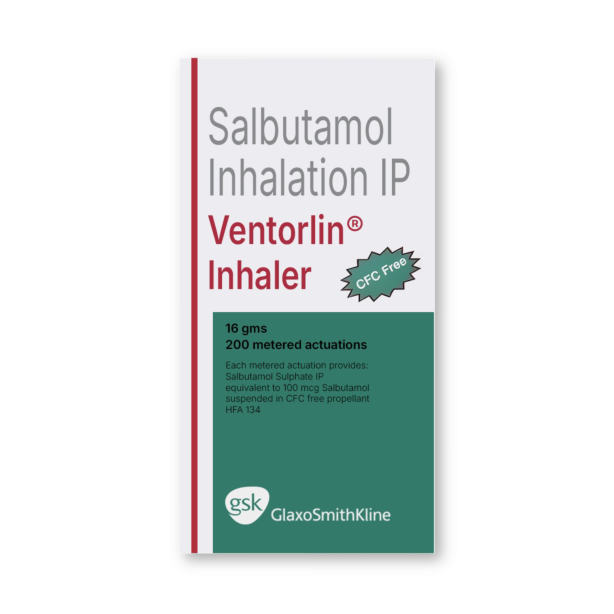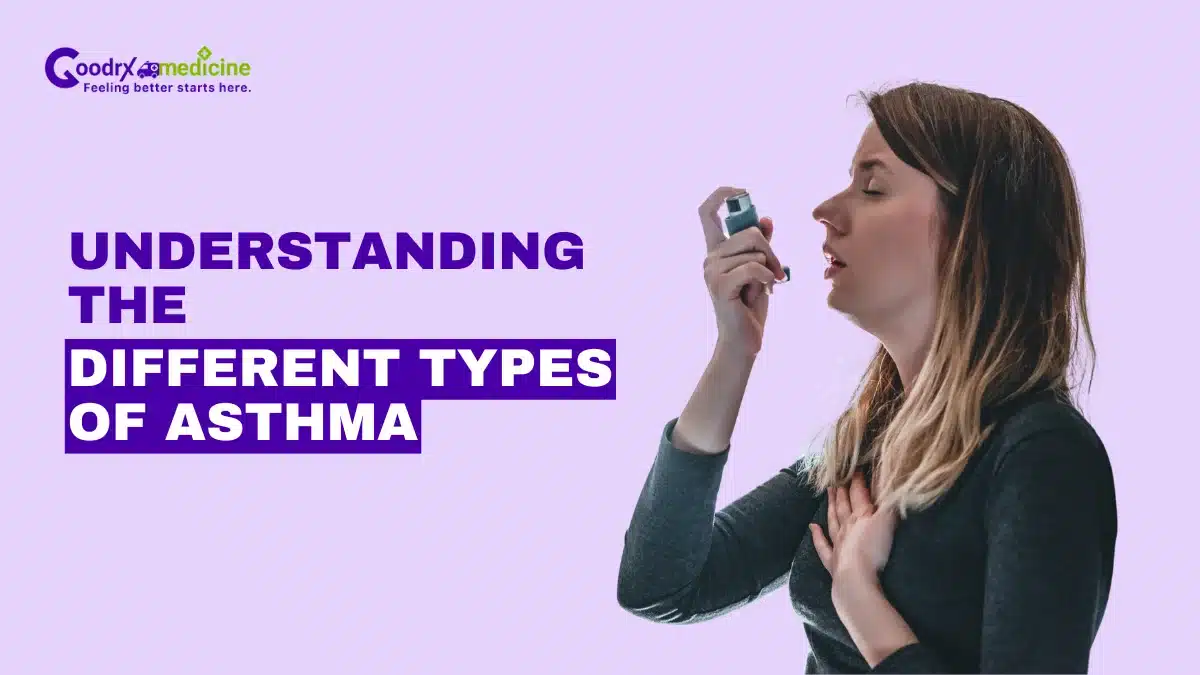Asthma is not a single disease but a collection of related breathing disorders that affect the airways differently. While all forms involve inflammation and narrowing of the breathing passages, the underlying causes, triggers, and treatment responses vary significantly.
Whether managing your condition or supporting a loved one, recognizing the different types of Asthma can make a significant difference in treatment success. From childhood forms that may improve with age to severe types requiring specialized care, each presents unique challenges.
Understanding your type helps doctors create personalized treatment plans that more effectively target your triggers. So, read on to learn about the types of Asthma in this article.
Allergic Asthma
Allergic Asthma is one of the most common forms of Asthma, affecting 80% of children and 50% of adults. This type occurs when the immune system responds excessively to substances that are usually harmless in the environment.
Common triggers include pollen from grasses and trees, dust mites in bedding, pet dander from cats and dogs, and mold spores in damp areas. People with this type often have other allergic conditions like hay fever or eczema.
Treatment involves avoiding known allergens, using Antihistamines, and following standard Asthma medications, including bronchodilators and anti-inflammatory medicines. Allergy shots may help some patients become less sensitive to their triggers over time.
Save up to 90% on your medicine bills

Aerocort Inhaler 50 mcg + 50 mcg

Bolstran 150 mg Injection

Ventorlin CFC Free Inhaler 100 mcg/18 mg

Asthalin HFA Inhaler 100 mcg
Non-allergic Asthma
Non-allergic Asthma is typically triggered by non-allergen factors such as cold weather, viral respiratory infections, strong smells (like perfumes or cleaning agents), air pollutants, emotional stress, and intense physical activity.
Unlike allergic Asthma, it does not involve an immune response to allergens but is provoked by irritants that directly impact the airways. This type often develops later in life and may be harder to control than allergies.
Treatment focuses on avoiding irritants and using medications to reduce airway inflammation.
Occupational Asthma
Occupational Asthma refers to Asthma triggered by exposure to dust, fumes, gases, or other irritants encountered in the workplace. These substances can alter lung function by provoking immune responses. It affects individuals across many industries, such as healthcare, baking, construction, and chemical manufacturing.
Occupational or work-related Asthma can often be managed and requires workplace evaluation. It may involve changing job duties, improving ventilation, or using protective equipment. In severe cases, affected individuals might need career changes to avoid continued exposure.
Exercise-induced Asthma
Exercise-induced Asthma, or Exercise-Induced Bronchoconstriction (EIB), occurs when physical activity causes the airways to narrow, leading to symptoms (wheezing, coughing, or shortness of breath).
It is often triggered by cold, dry air or high-intensity workouts like running, while gentler exercises like swimming may be less problematic. Rapid breathing can dry and irritate the airways, causing inflammation.
Preventive steps such as warming up, using prescribed inhalers, and adjusting your exercise routine can help manage symptoms and keep you active.
Severe Asthma
Severe Asthma affects 5-10% of people in the US, but causes most complications. It can be defined as requiring high-dose medications or remaining uncontrolled despite proper treatment.
People with severe forms of asthma experience frequent symptoms, including shortness of breath, chest tightness, nighttime awakenings, and limited activity due to breathing difficulty. This difficulty interferes with daily activities and requires repeated emergency visits. Standard medications may provide only partial relief, requiring specialized treatments like biologic therapies.
Management involves pulmonary specialists who prescribe advanced treatments. These patients need regular follow-up appointments and comprehensive Asthma education programs.
Seasonal Asthma
Seasonal Asthma is a subtype of allergic Asthma that flares up during specific times of the year, especially spring and fall, when pollen levels are high. Outdoor allergens like tree, grass, or weed pollens trigger it.
This type is closely tied to hay fever and other seasonal allergies. People may experience wheezing, chest tightness, and coughing only during these peak seasons but feel normal the rest of the year.
Management includes preemptive use of inhalers, staying indoors during high pollen days, and using air purifiers. Antihistamines and nasal sprays may also help reduce symptoms during flare-up periods.
Eosinophilic Asthma
Eosinophilic Asthma is a rare but severe form characterized by high levels of Eosinophils, a form of white blood cell, in the airways. These cells cause significant inflammation and damage, leading to persistent, difficult-to-control symptoms.
It often presents in adults and can occur without a strong allergy history. Common symptoms include chronic cough, frequent flare-ups, and increased mucus production.
Management includes corticosteroids like Omnacortil and biologic medications targeting Eosinophils, such as Mepolizumab or Benralizumab. Regular monitoring and specialist care are essential for these patients.
Adult-onset Asthma
Adult-onset Asthma develops after the age of 20 and is more common in women than men. It often goes undiagnosed initially, as symptoms may be mistaken for other conditions like Bronchitis or aging-related breathlessness.
Triggers can include environmental irritants, hormonal changes, viral infections, or workplace exposures. It may be more persistent than Childhood Asthma and less responsive to standard inhalers alone.
Treatment typically includes inhaled corticosteroids, long-acting bronchodilators, and close medical supervision to monitor flare-ups and medication effectiveness.
Childhood Asthma
Asthma commonly begins in childhood, with many cases developing before age five. Children’s developing lungs create unique challenges.
Young children may have difficulty describing symptoms. Frequent coughing, especially at night, may be the primary sign rather than wheezing. Reduced energy during play or complaints of tiredness might indicate breathing problems.
Asthma treatment ensures medications are age-appropriate and delivered through devices children can use effectively. Many children improve as they age, with some experiencing complete symptom resolution during adolescence.
Asthma-COPD overlap
Some individuals develop features of both Asthma and Chronic Obstructive Pulmonary Disease (COPD). This typically affects older adults with long-standing breathing problems.
These patients often have more severe symptoms than those with either condition alone. Smoking history commonly contributes to this overlap.
Treatment requires addressing both inflammatory and structural airway changes. These patients need more intensive monitoring and may experience more complications.
Management and support for different types of Asthma
Managing Asthma goes beyond medication; it involves education, awareness, and lifestyle adjustments.
- Trigger avoidance: Identify and minimize exposure to allergens, pollutants, and stress.
- Asthma action plan: Work with your doctor to track symptoms, manage medications, and prepare for flare-ups.
- Regular check-ups: Ensure Asthma stays controlled and adjust Asthma treatment as needed.
- Lifestyle and breathing support: Include pulmonary rehabilitation, breathing exercises, and managing weight, which can help improve Asthma control and lung function
- Education and awareness: Learn symptom recognition and emergency response for patients and caregivers.
Conclusion
Understanding different types of Asthma is crucial for effective management and improved quality of life.
From allergic Asthma in children to severe forms requiring advanced biologic treatments, each type of asthma needs a personalised approach for effective management.
Non-allergic Asthma responds differently from occupational forms, while exercise-induced symptoms need targeted prevention strategies. Childhood Asthma often improves with age, but adult-onset cases may prove more challenging.
The key to successful management is identifying your triggers, whether environmental allergens, workplace irritants, or physical activity. With proper diagnosis and personalized treatment plans, most people with any type can maintain active lifestyles and prevent serious complications through consistent care.

Frequently Asked Questions
What type of hypersensitivity is Asthma?
Asthma represents Type I hypersensitivity mediated by IgE antibodies. When allergens bind to these antibodies on mast cells, they release inflammatory substances like histamine within minutes, causing immediate airway constriction and swelling.
Can you have more than one type of Asthma?
Yes, mixed Asthma with multiple triggers affects many people. Someone might experience allergic reactions to pollen and exercise-induced symptoms, requiring treatment strategies that address environmental allergens and pre-exercise medication protocols.
What type of Asthma is considered a disability?
Severe, persistent Asthma significantly limiting major life activities like working, sleeping, or breathing may qualify under disability laws. The determination depends on documented functional limitations despite optimal medical treatment and workplace accommodations.
Is Bronchitis a type of Asthma?
No, Bronchitis involves bronchial tube inflammation, while Asthma causes airway hyperresponsiveness. However, viral Bronchitis can trigger Asthma attacks in susceptible individuals, and chronic Bronchitis may coexist with Asthma in some patients.
Can certain medications trigger Asthma attacks?
Yes, aspirin and beta-blockers commonly trigger Asthma symptoms in sensitive individuals. Aspirin aggravated respiratory disease affects 10-20% of adults with Asthma, causing severe reactions including nasal polyps and breathing difficulties requiring specialized treatment approaches.
Are there genetic factors in different Asthma types?
Genetic variations influence Asthma and treatment responses. Children with a family history have a 3-6 times higher risk, while specific gene variants affect medication effectiveness, particularly for bronchodilators and anti-inflammatory treatments in different ethnic groups.
When referencing outside resources, GoodrxMedicine always provides full citations. To learn more about the measures we use to maintain the quality of our content, please review our Content Information Policy.











